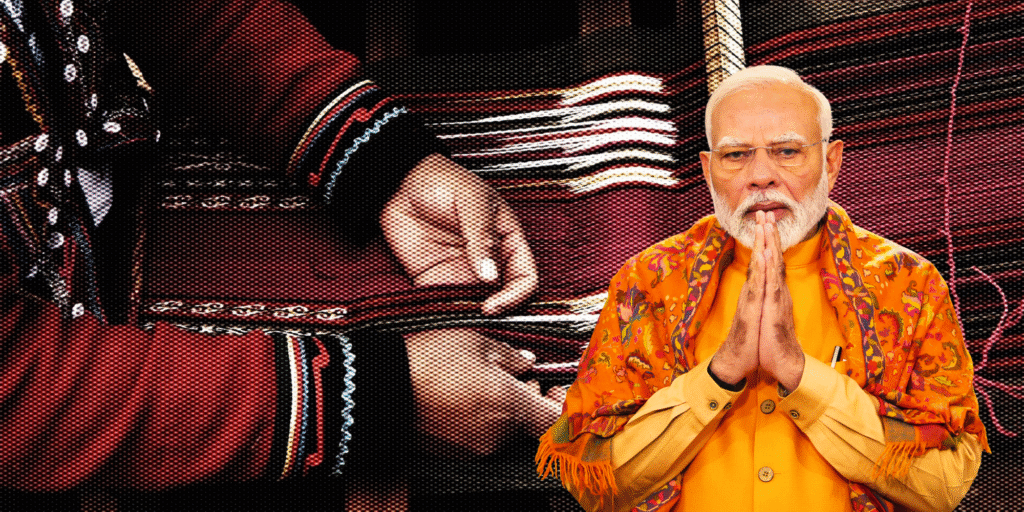
India’s rich textile heritage, long interwoven with its cultural identity, is experiencing a renaissance. In the 124th episode of Mann Ki Baat, Prime Minister Narendra Modi spotlighted how small towns like Paithan in Maharashtra and regions like Nalanda in Bihar are becoming powerhouses of traditional artistry, economic revival, and self-reliance. The thread that ties them together? The loom.
A New Chapter in an Ancient Tale
From the handlooms of Nalanda a seat of ancient learning and craft to the intricate Paithani sarees of Maharashtra, India’s textile sector is being reborn with a new energy. Once limited by space, opportunity, or access, artisans and small entrepreneurs are now witnessing transformative change. What was once a family tradition practiced in humble settings is becoming a pathway to prosperity, powered by government support, modern education, and technology.
Prime Minister Modi’s address emphasized this transformation as more than just an economic shift, it’s a cultural and generational revival. With children of traditional weaving families now studying handloom technology and integrating design with digital platforms, the loom has become a bridge between past and future.
The Village as a Hub of Innovation
One of the most remarkable outcomes of this textile resurgence is the emergence of small towns and villages as centers of innovation and entrepreneurship. In Paithan, famed for its centuries-old Paithani sarees, women-led ventures are turning tradition into thriving enterprises. Across the country, tribal and rural communities are not just preserving ancient weaving styles, they’re commercializing them and reaching new markets, often for the first time.
This grassroots revival aligns closely with Viksit Bharat the vision of a developed India. These are not just stories of income generation; they represent empowerment, self-expression, and community pride. Each thread woven carries with it the legacy of generations, now strengthened by the opportunity to scale and flourish.
From Cottage Craft to Global Startup
India’s handloom sector is also finding strong footing in the startup ecosystem. With over 3,000 textile-focused startups today, many are using technology to elevate local crafts to global recognition. Whether through sustainable dyes, design innovation, or direct-to-consumer platforms, these ventures are giving Indian handlooms a new global identity.
The synergy between tradition and entrepreneurship is particularly striking. Village women, senior artisans, urban designers, and young technologists are collaborating in ways that transcend geography and age. This collective movement is reshaping not just the perception of handloom but also the rural economy.
Cultural Identity as Economic Strength
PM Modi underscored that textiles are not merely a sector they are a living expression of India’s cultural diversity. Every saree, shawl, and woven fabric carries with it a regional story, a family lineage, and a community’s identity. Now, these stories are finding space in mainstream narratives, national markets, and global exhibitions.
The support from government initiatives, training programs, and market linkages is enabling artisans to step confidently into a digital and global age. With exposure through national platforms and recognition by leaders, traditional craftsmen and women are now embracing their role as cultural ambassadors.
Looms of Hope
As India moves toward becoming a $5 trillion economy, sectors like textiles serve as a blueprint for inclusive growth. They show how tradition and technology, rural and urban, past and future can come together to build something enduring.
From Nalanda to Paithan, and from village mud-huts to startup showrooms, India’s looms are no longer just tools of craft—they are instruments of change, empowerment, and pride. And with every thread they weave, they’re stitching together the vision of a truly Viksit Bharat.

